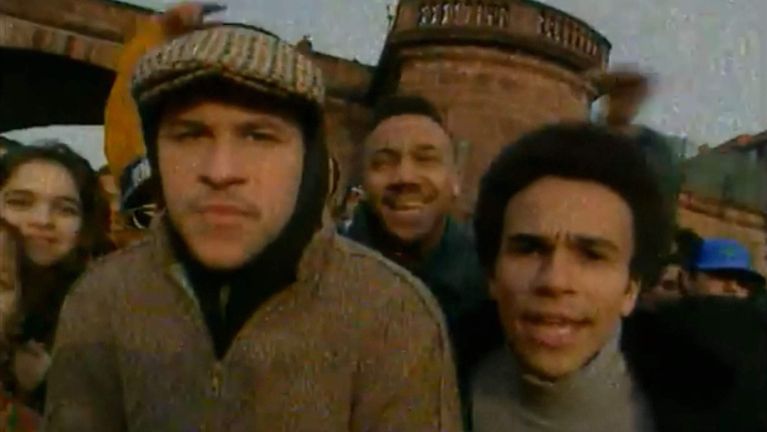German rap without borders
Why hip-hop from Heidelberg is listed as intangible cultural heritage and also an example of European connections.

Heidelberg hip-hop has been listed as intangible cultural heritage since 2023. Bryan Vit wrote the application to the German Commission for UNESCO. In our interview, the researcher explains what makes Heidelberg hip-hop so special and how its creators are connected with other artists in Europe and beyond.
Mr Vit, what makes Heidelberg hip-hop cultural heritage?
Intangible cultural heritage refers to traditions and forms of expression that are passed on orally, artistic forms of representation, social customs, festivals and rituals. Hip-hop, with its elements of rap, DJing, graffiti, breakdance, street language and knowledge – the idea of questioning oneself and one’s environment - is a perfect fit for this concept.
Why Heidelberg of all places?
Heidelberg is one of the centres of hip-hop in Germany, though not its only home. What is special about Heidelberg is that hip-hop as a whole is embraced there, whereas other cities focus on specific elements such as rap or graffiti. The concept as a whole has always been cultivated in Heidelberg. This has led to the efforts now being undertaken to establish a hip-hop archive so that the idea can continue to be passed on.
How and when did hip-hop emerge in Heidelberg?
In the early 1980s there was a breakdance hype in Germany that soon died down again, yet some small groups continued. About 15 people were involved in Heidelberg. Together, they would travel to hip-hop jams in Germany, Switzerland and Austria, as well as in France. In 1987, this Heidelberg group spawned the band “Advanced Chemistry”, which initially rapped in English. Torch, one of the band members, then started free-styling in German - improvising raps, in other words - in the breaks between songs when they were performing. Until that point, it had been unthinkable to rap in German, as people would base their lyrics on English-language rap from the USA. However, the band noticed during these spontaneous outbursts that they were getting a much bigger response because people could understand much better what they were talking about.
Dieses YouTube-Video kann in einem neuen Tab abgespielt werden
YouTube öffnenThird party content
We use YouTube to embed content that may collect data about your activity. Please review the details and accept the service to see this content.
Open consent formWas and is German hip-hop internationally connected?
Yes, if you ask the pioneers, you will often hear them say: “We didn’t see ourselves as German hip-hop - it was European hip-hop.” People viewed themselves as part of a family, and it was only later that a distinct national identity emerged. For example, there was a formation named “La Connessione”, made up of Toni-L from Heidelberg alongside groups and artists from Belgium and Italy. These connections and friendships exist to this day. Heidelberg is also unique for its close ties to New York hip-hop.
How did the idea of proposing Heidelberg hip-hop as cultural heritage come about?
This was an initiative of the Heidelberg City Archive, inspired by the local hip-hop scene. Besides the work on a hip-hop archive, there are now plans to establish a cultural institution that would provide a home for hip-hop. This culture could then be documented, researched and taught there.
What do you hope that recognition as cultural heritage will bring?
We see it as a door opener. It is one key to arousing the interest of people who previously had no connection to the subject. Being stamped “cultural heritage” makes it clear that it is worth engaging with this form of culture.
Isn’t that something of a contradiction - independent and self-determined hip-hop getting an official cultural heritage stamp?
No, it’s part of the culture’s growing-up process. This year we are celebrating 50 years of hip-hop – breakbeat was invented by a New York DJ at a party in 1973 – and our pioneers from Heidelberg are also reaching an age where they can no longer play an active part in the entertainment industry. So it’s also about finding ways to grow old with dignity in hip-hop. And this can be done by creating spaces in which these people with all their incredible experience and knowledge can pass on their legacy.
Are there similar efforts in other countries – have you ever been asked for advice?
Yes, we actually advised representatives of the cultural authority in Seine-Saint-Denis in Paris who want to set up a graffiti museum. And recently we attended a conference in the UK and talked to people from all over the world who are involved in archiving hip-hop. There are already archives at Cornell University in New York and in Toronto, and in Colombia you can go and see a hip-hop exhibition at a national museum.



